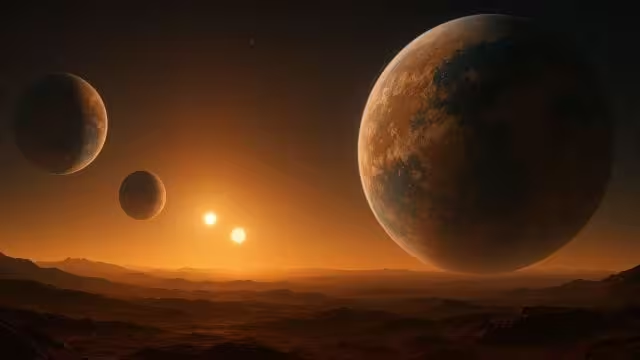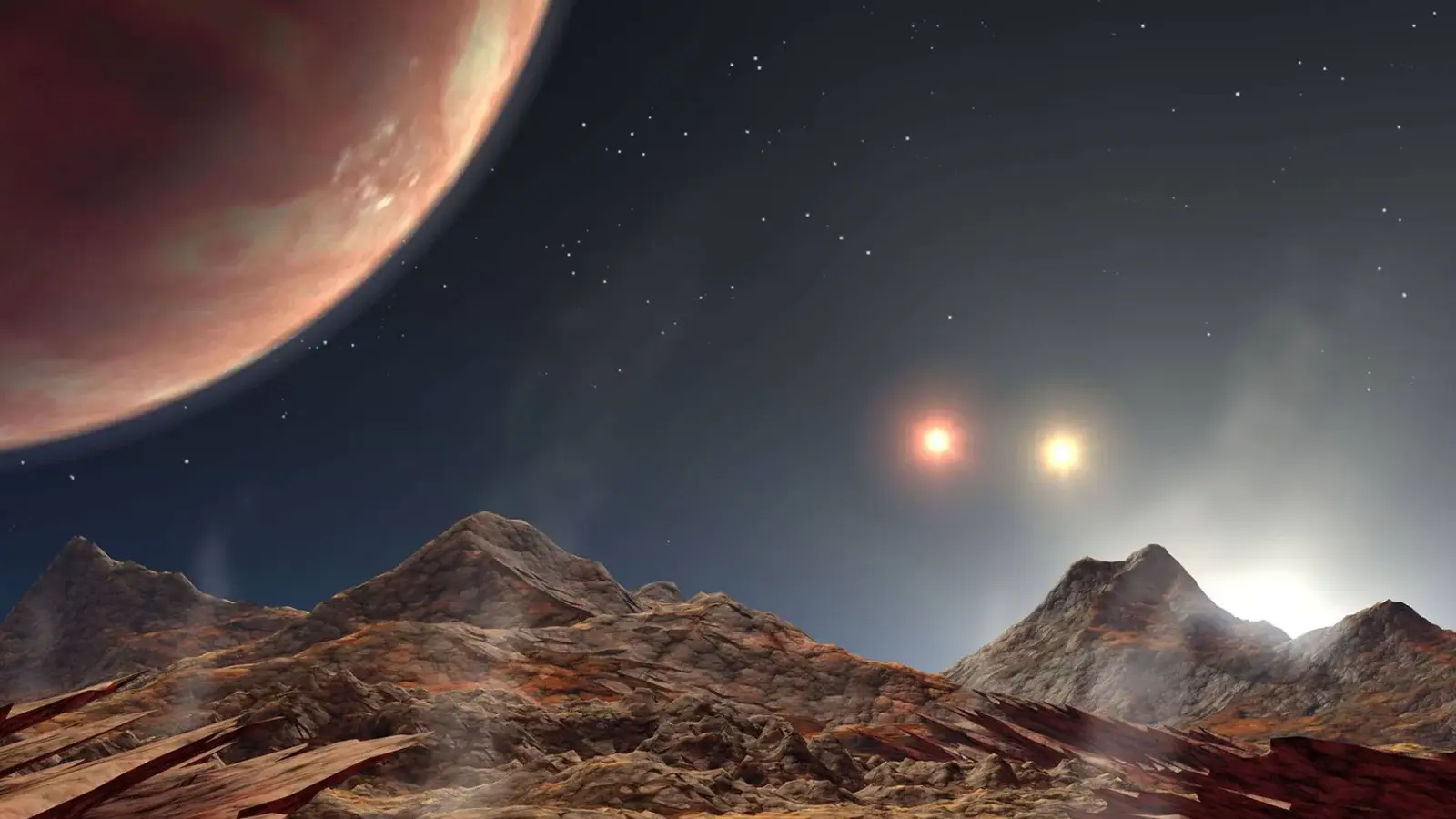4 Minutes
Astronomers have identified three Earth-size exoplanets orbiting a tight pair of stars in the TOI-2267 system — a rare configuration that produces dual sunsets and challenges long-held ideas about planet formation in binary systems.
A compact binary with an unexpected planetary family
Located roughly 190 light-years from Earth, TOI-2267 is a compact binary: two stars orbiting very close to one another. Using data from NASA's Transiting Exoplanet Survey Satellite (TESS), researchers detected repetitive dips in brightness indicating three small, rocky worlds crossing in front of their host stars — the transit method in action. Each of these planets is similar in size to Earth and, crucially, orbits the combined gravitational center of both stars, meaning inhabitants (if any) would witness two separate sunsets as each star independently falls below the horizon.
Why this discovery overturns expectations
Binary systems have long been considered hostile to planet formation, especially when the two stars are closely separated. Classical models predict strong gravitational perturbations that should destabilize protoplanetary disks and prevent stable, long-lived orbits. TOI-2267 contradicts that assumption: despite being one of the coldest and most compact stellar pairs known to host transiting planets, it clearly supports at least three rocky planets.
What this tells us about planet formation
The presence of small planets in such a dynamically complex environment suggests that planet formation can proceed in ways we don't yet fully understand. Either the protoplanetary disk settled into a stable configuration early on, or planetesimals and embryos found pathways to grow and migrate to safe orbital niches. Studying TOI-2267 gives astronomers a natural laboratory to refine models of accretion, migration, and long-term orbital stability in binary systems.

How the planets were found and verified
The team led their search with the TESS survey, then ran specialized detection software nicknamed "Sherlock" to comb the light curves for transit signals. Follow-up observations came from ground-based, small-telescope networks optimized for cool, dim stars: the SPECULOOS and TRAPPIST facilities provided crucial confirmation and refined transit timings. These combined datasets allowed researchers to establish that the planets transit both stellar components in this tight pair — a first for a known binary system.
Implications and next steps for observation
TOI-2267 now ranks as the first binary system where planets are seen transiting both members nearly simultaneously. That opens several avenues for research: measuring planetary masses via radial-velocity campaigns, constraining densities to test rocky compositions, and searching for atmospheres with advanced instruments. The James Webb Space Telescope (JWST) and next-generation ground observatories could probe atmospheric signatures, if any, or detect secondary eclipses to map temperature contrasts created by the dual-star illumination.
As the lead research team member at the Institute of Astrophysics of Andalusia (IAA-CSIC) noted, this system breaks several records: it is among the coldest and most compact stellar pairs to show transiting planets, and the first in which planets are observed transiting both stars. In short, TOI-2267 forces astronomers to rethink how resilient planet formation can be, even under strong gravitational stress.
Broader significance for exoplanet science
Discoveries like these expand our picture of planetary diversity across the galaxy. They remind us that rocky worlds need not be restricted to single-star systems and that the cosmic recipe for making planets is more flexible than expected. By combining survey missions (TESS), targeted ground-based follow-up (SPECULOOS, TRAPPIST), and tailored detection tools (Sherlock), researchers are now able to probe environments that previously seemed improbable places to find planets.
Future observations will clarify the masses, compositions, and potential atmospheres of the TOI-2267 planets, while theoretical work will update formation and stability models for compact binaries. For now, the image of dual sunsets on Earth-sized worlds offers a vivid reminder: the universe still has surprises waiting just beyond our familiar assumptions.
Comments
mechbyte
hmm is the transit signal for both stars really confirmed? seems tricky, could be noise or blended light...
astroset
whoa dual sunsets, tiny Earths around a tight binary? mind blown... how did they survive? curious af


Leave a Comment